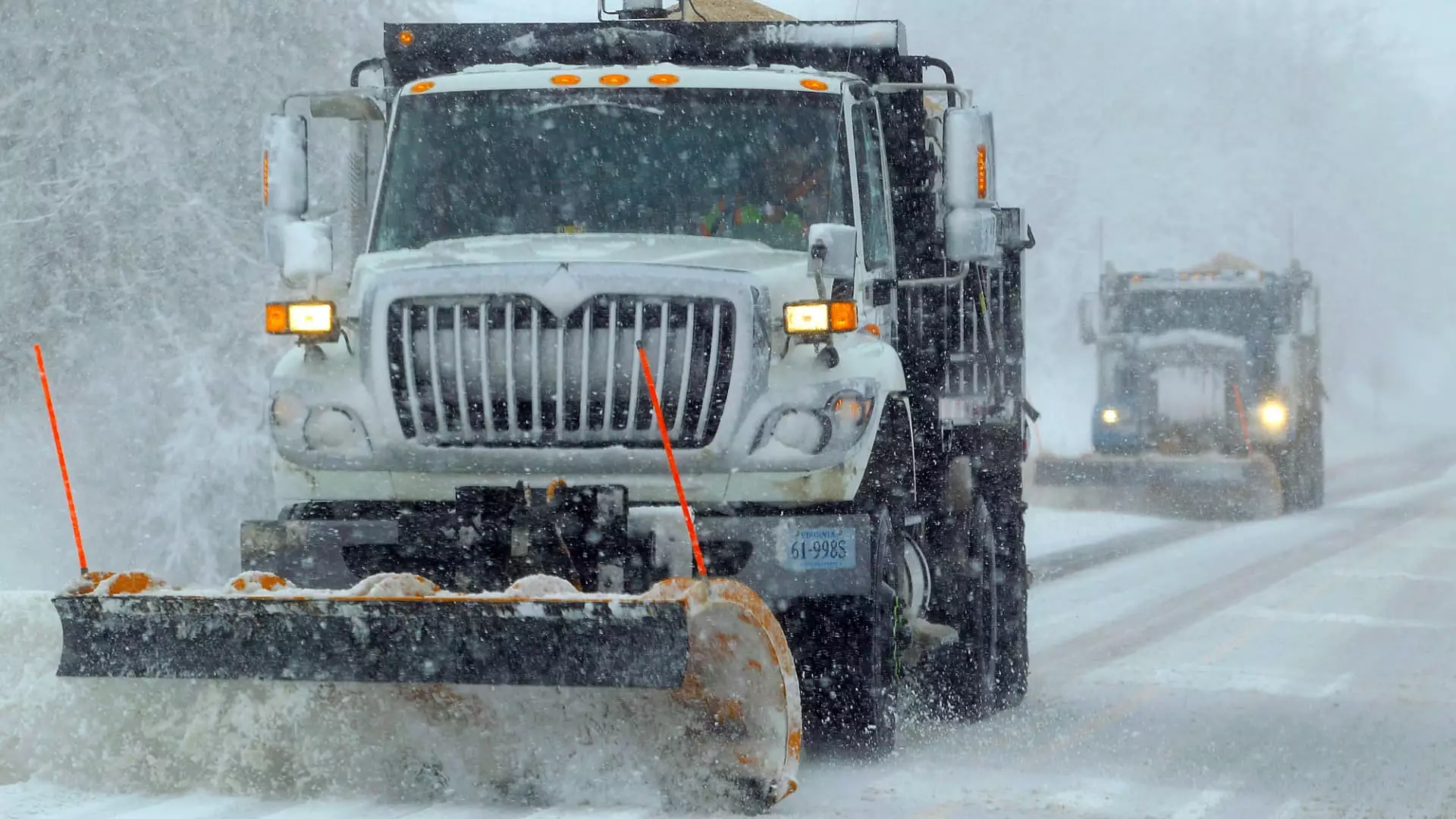As winter settles in across the United States, a cold wave driven by a polar vortex is making headlines for its intensity and the havoc it promises to wreak. Recent forecasts indicate that tens of millions of Americans are bracing themselves for one of the most significant winter storms in over a decade, with heavy snowfall and bitterly cold temperatures anticipated to affect countless regions. States such as Kansas, Arkansas, Kentucky, and Virginia have declared states of emergency, showcasing the extreme measures compelled by the impending storm.
The polar vortex itself is a phenomenon that occurs when frigid air from the Arctic flows southward, creating conditions ripe for hazardous winter weather. This unpredictable weather pattern shifts like a pendulum; when it swings south, areas that are typically temperate find themselves in the grips of brutal cold—and this is precisely what is happening now. With forecasts hinting at heavy accumulations of snow and sub-zero temperatures, the National Weather Service (NWS) has placed approximately 60 million people under weather alerts, covering a vast swath of the nation from the Plains to the mid-Atlantic.
The storm’s impact is already evident in the travel sector, as authorities implement weather-related precautions. Kansas City International Airport, a significant hub in the region, temporarily suspended operations on Saturday due to heavy snow accumulation and dangerous conditions. Flight delays skyrocketed, with reports noting nearly 7,000 weather-related disruptions nationwide. Major airlines are responding to the turmoil by waiving change fees, understanding that this storm’s implications will affect travel plans for countless passengers.
Roadways have not fared much better. The NWS has issued blizzard warnings for large portions of Kansas and Missouri, signifying concerning conditions like reduced visibility and sustained winds. An 18-mile stretch of Interstate 70 in Kansas has already been closed, reflecting the dire circumstances that are unfolding. These warnings serve as a foreboding reminder that travel may be incredibly difficult, if not impossible, through the weekend.
Just ahead of the storm, local governments and emergency services are strategizing ways to mitigate the impact on daily life. Cities like Cincinnati, Chicago, and St. Louis have pre-treated roads, while shelters are being prepared to assist those in need of warmth. The proactive measures underscore the serious nature of this winter storm.
Interestingly, as the weather system moves eastward, southern states unaccustomed to severe cold, including Arkansas and Louisiana, are under the threat of potential tornadoes, damaging winds, and hail. In a region where winter doesn’t often feature such dramatic weather shifts, the stark contrast presents a unique challenge. Millions of residents across the lower Mississippi Valley have been placed on alert, further emphasizing that this storm will have far-reaching effects.
Over the course of the next few days, snowfall is expected to extend into the mid-Atlantic region and central Appalachians, likely causing further complications. Cities such as Washington D.C., Baltimore, and Philadelphia are preparing to face icy conditions as heavy snow sets in Sunday night, with projections indicating accumulations of 5 to 12 inches in parts of Virginia alone. The unprecedented severity of this weather could turn daily routines upside down for many, as closures and hazardous conditions grip the landscape.
Perhaps one of the most alarming aspects of this storm is not just the snow accumulation but also the expectation of record-low temperatures for vast areas of the eastern United States. With highs expected to plunge 10 to 25 degrees below the seasonal average, the forecasted overnight lows in regions like the northern Plains could reach a staggering minus 20 degrees, exacerbated by wind chills dipping to an alarming minus 40. Such extreme temperatures compel cold weather advisories across states from eastern Montana to Minnesota, where residents must prepare for unseasonably cold and potentially life-threatening conditions.
In light of these developments, it remains imperative that individuals stay informed and take preventive measures against the oncoming storm. As communities prepare for the winter’s wrath, the resilience and solidarity displayed in facing such natural disasters will be crucial for navigating the challenges ahead. The lessons from past storms serve as a reminder that preparedness, community support, and adherence to safety advisories can make a significant difference when confronted with the fury of winter.


Leave a Reply